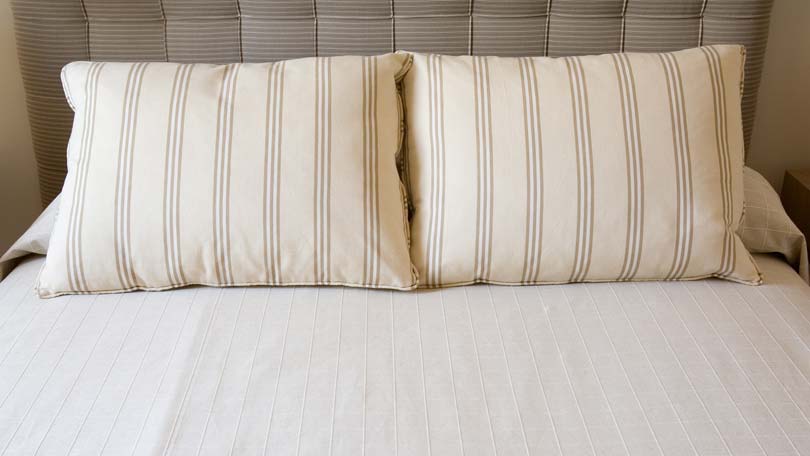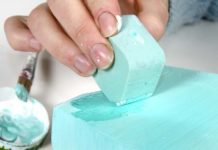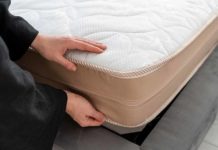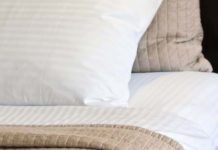
Choosing a bed is one thing, but choosing bedding is quite another. The first step is to decide on the general type of bedding you want, the second will then relate to specifics.
But first here are some general tips to consider when buying bedding for your bedroom.
The Top Ten Tips on Buying Bedding
- The type of bedding you choose should be in keeping with the style of your bedroom decor.
- The bedding should be appropriate to the type of bed you have opted for.
- If you or members of your family have any allergies, ensure that whatever bedding you choose is anti-allergenic.
- Some bedding is easier to clean than other types; bear this in mind.
- Some bedding is easier to maintain than other types, sheets that don’t need ironing for instance.
- Bedding made from synthetic materials is cheaper than that made from natural materials, but choices should not be made purely according to price.
- Whatever type of bedding you opt for, items should always be considerably wider than the bed. As an example, duvets should be at least 450 mm wider.
- Some types of bedding are heavier than others; this does not make them necessarily warmer, and in fact some light-weight bedding is warmer than heavy blankets.
- If you have pets that sleep in your bedroom, color will be an important consideration. White and pale colors can look really beautiful, but should be avoided if there is a risk of dirty paws on the bed.
- You don’t have to be limited to one look in the bedroom. If you create a versatile shell of a room, you can mix and match bedding as often as you choose, particularly in terms of duvet covers and pillowcases.
A Choice of Bedding
The two basic choices are between sheets and blankets, or duvets. Quilts and comforters may be used with both, or they may be used instead of blankets. It really depends on what you find comfortable.
For most of the 20th century, it was customary in many countries to use sheets and blankets. A bed was commonly made by:
- first placing an under-blanket on the mattress,
- then covering this with a sheet that was large enough to tuck under the mattress,
- then a second sheet was laid over the bottom sheet,
- and then one or more blankets to cover the sheet, leaving a few inches of sheet at the top of the bed uncovered,
- folding the top sheet over the blanket,
- and tucking the sheet in on both sides and at the bottom of the bed.
Finally, a quilt, comforter, bed cover or bedspread may be used on top. The difference between quilts and comforters, and ordinary bed covers (apart from the quilting), is that bedspreads are made to fit over the pillows as well as the rest of the bedding. Quilts and comforters look attractive and provide extra warmth at night if required. Bedspreads, on the other hand, are intended to be used as a protection against dust, and are usually removed at night.
Making a bed with sheets and blankets is not difficult, although it is more time consuming that making a bed with a duvet. The only trick in terms of creating a neat finish comes from hospital nurses who are taught how to use a special “envelope fold” at the bottom corners that looks neat and is not as bulky as the corners can be when blankets are tucked in without the fold.
Duvets revolutionized the art of bed making, as did fitted sheets. All you do is smooth out the bottom sheet, give the duvet a shake to plump it out, and then put it back in place. Pillows of course should also be plumped out and rearranged, which also applies the bed made with blankets and sheets.
While the duvet cover takes the place of an upper sheet, and the duvet, of course, takes the place of blankets, there are people who prefer to sleep with two sheets and a duvet.
Having decided which route you want to go, you can go shopping for bedding.
Bedding Specifics
Bed Linen
Whichever type of bedding arrangement you have chosen, you are going to need bed linen; sheets, pillowcases, and if you have opted for a duvet, duvet covers as well. A basic rule of thumb is to buy at least double of what you need. So if you are only using a bottom sheet, buy two. If you have four pillows on the bed, buy eight pillowcases, and buy two covers for the duvet. If you don’t take this approach, you’re going to have to wash and dry everything within a day to ensure you always have bed linen on the bed.
You will find that most duvet covers are sold in sets, together with at least two pillowcases. If you need more pillowcases, be sure to choose a color that matches or is appropriate. Many people will buy two of the same duvet covers, so that the décor scheme is constant; when one is in the wash, the other is on the bed.
Blankets
The choice in blankets ranges from natural hair including wool and mohair, cotton, to a variety of synthetic materials. While synthetics are generally cheaper and easier to care for, they tend to “trap” heat. So be aware of this.
The more expensive woolen blankets are lighter than most, as well as being soft and warm. Cheaper woolen blankets tend to be heavier. Another option is a handmade crochet blanket. These can add cheerful color if different colored squares are crocheted and then joined together.
Cotton blankets are both light and reasonably warm, and usually fit a medium price range. A popular type is woven into a loose honeycomb pattern.
Even if you opt for a duvet, you might like a blanket or two for those chilly winter months. Alternatively you could opt for a quilt or comforter as well as a duvet.
Duvets and comforters
Duvets are mostly light and warm, particularly those that are stuffed with down or a combination of down and feathers. Those stuffed with synthetic materials are non-allergenic, which makes them especially popular. Since duvets stuffed with synthetic fillings are also cheaper, buy the best quality you can afford to ensure that they last longer that a really cheap product.
One of the most useful tips on buying bedding is to remember that quilts and comforters are filled with the same types of stuffing as duvets. Since you don’t use a separate cover with a comforter, be sure it is going to be easy to keep clean.





